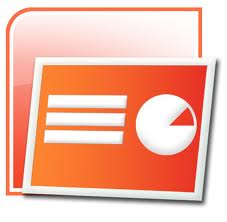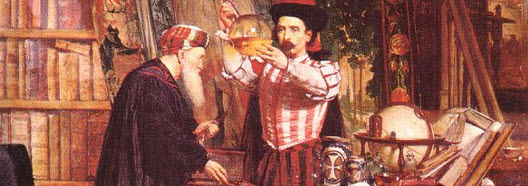The Scientific Method and Principles of Science
Although labs may not be as integral a part of an environmental science course as with other sciences, it is still essential that students have a clear understanding of the scientific method and its importance. Nearly every aspect of environmental science has conflicting viewpoints. Many of these viewpoints have at least some basis in research and scientific principle, while others more closely resemble pseudoscience. An ability to use and recognize the scientific method will enable students to differentiate between true science and junk science later in the course.
Scientific Method and Principles of Science Unit Plan
 |
Purpose: This is an outline of the major topics covered within this unit, their suggested sequence, a time estimate for each topic, and important objectives and vocabulary covered by this unit. Links are provided for any website, video clip, worksheet, or lecture Powerpoint needed by the instructor.
This unit plan is primarily written for instructors of upper-level high school students and introductory college-level students.
Principles of Science Lecture Powerpoint
 |
Purpose: This Powerpoint provides the structure and ordering of the unit. Break up the lecture into sections by adding activites, discussions, labs, and videos. This will allow the material within the unit to be taught in small, managable amounts, while giving students the opportunity to apply the knowledge in a variety of different ways.
Essential Concepts: Scientific method, pseudoscience, hypothesis, theory, observation, experimental group, control group, independent variable, dependent variable, prediction, natural experiment, modeled experiment, blind experiment, double-blind experiment, probability, sample size, matter, law of conservation of matter, energy, laws of thermodynamics, atomic structure, protons, neutrons, electrons, atom, molecule, compound, pH scale, acids, bases.
Principles of Science Lecture Notes Outline
Purpose: Taking efficient notes can be a big challenge for many students, especially when working from a Powerpoint lecture. This outline gives students a means to take notes that guides them toward important concepts and avoids the pitfalls of writing word-for-word or simply not taking notes at all. The outline is written as a series of questions, fill-in-the-blanks, or diagrams.
Essential Concepts: Scientific method, pseudoscience, hypothesis, theory, observation, experimental group, control group, independent variable, dependent variable, prediction, natural experiment, modeled experiment, blind experiment, double-blind experiment, probability, sample size, matter, law of conservation of matter, energy, laws of thermodynamics, atomic structure, protons, neutrons, electrons, atom, molecule, compound, pH scale, acids, bases.
Famous Examples of the Scientific Method Worksheet
Purpose: The scientific method is a concept that is taught in every science class. However, students often do not seem to fully grasp its importance as a tool in experimental design. This worksheet shows them three famous experiments, the results of which continue to affect us even today. The experiments include: the Free Air Carbon Dioxide Enrichment (FACE) studies, the Robert Paine starfish experiment, and the case of the peppered moth during the industrial revolution. The last experiment students will use as a basis to create their own experiment.
Essential Concepts: Scientific method, pseudoscience, hypothesis, theory, observation, experimental group, control group, independent variable, dependent variable, prediction
Mythbusters Clip: "Who Gets Wetter?"
Purpose: This is one part of episode one of Mythbusters as seen on the Discovery Channel, entitled "Magic Bullet, Exploding Toilet, Who Gets Wetter?" Most segments of the Mythbusters television show are great for illustrating the scientific method. This one in particular is effective, as the actual raw quantitative data collected in the experiment is shown. Students can perform an analysis of their own and assess the validity of the conclusions of this segment.
Essential Concepts: Scientific method, experimental design, quantitative data, graphing, independent variable, dependent variable, sample size, natural experiments, modeled experiments.
The Eyes of Nye: Pseudoscience
Purpose: This episode of the "Eyes of Nye" gives students a brief tour of some of the most famous examples of modern pseudoscience. Bill Nye applies the scientific method to "extraordinary claims" such as astrology, fortune-telling, palm-reading, tarot cards, firewalking, and others.
Essential Concepts: Pseudoscience, scientific method, bias, experimental design, astrology, zodiac, fire walking, tarot cards, psychics, cold reading.
Fake News Analysis Assignment - Death By Vaccines
Purpose: This assignment will present students with three articles about vaccines: one from the Washington Post, one from Natural News, and the other from a website called "Vaccines.news". Students will be guided through an analysis of the articles, including identifying clickbait, researching the background of the authors, and judging the validity of several statements within the articles.
Essential Concepts: Pseudoscience, fake news, news analysis, sources.
Lab: Do Dowsing Rods Actually Work?
Purpose: The best way to learn the scientific method is to actually apply it in a hands-on way. This lab allows students to test an unusual claim -- that copper dowsing rods can be used to locate water, missing objects, or deposits or metal underground. Most scientists identify dowsing rods as another example of pseudoscience, and this lab helps guide students in constructing a blinded experiment where they test the claimed properties of dowsing rods themselves.
Essential Concepts: Scientific method, observation, experiment, independent variable, dependent variable, hypothesis, conclusion, data analysis, bias, pseudoscience.
Astrology as Pseudoscience: Analyzing a Horoscope and Zodiac Signs
Purpose: Astrology is a great modern example of pseudoscience. Interpreting the movements of the planets and relative positions of stars and constellations seems scientific on the surface, but a deeper look exposes a complete lack of any scientific methodology at all. This is a multipart activity that will help students explore what astrology is all about and question its tenants.
Essential Concepts: Pseudoscience, scientific method, bias, experimental design, astrology, zodiac.
PBS Nova Documentary: Secrets of the Psychics
Purpose: This documentary explores multiple supernatural claims made by psychics, psychic healers, faith healers, and others. Students will see that when the scientific method is applied to each of these claims, they fall apart rather quickly.
Essential Concepts: Pseudoscience, scientific method, experimental design, independent variable, dependent variable, double-blind experiment
Behind the Curve Documentary
Purpose: This documentary seeks to understand the Flat Earth movement. While this might seem like an unusual topic to broach in a science class, its actually a great example of pseudoscience, the scientific method, and bias in the modern era. People who believe the Earth is flat have an inherent distrust in many institutions -- the government, science, and education. As such, they seek to discover what the truth is, and in doing so, construct and conduct many of their own experiments. This documentary provides a lot of opportunity for class discussion of the basis of their distrust, bias, and where exactly in the scientific method they're going wrong.
Essential Concepts: Pseudoscience, scientific method, experimental design, bias.
Scientific Method and Principles Study Guide
Purpose: Once the instruction for the unit is completed, students can complete this study guide to aid in their preparation for a written test. The study guide is divided into two sections: vocabulary and short answer questions. The vocabulary is taken directly form the lecture, sequentially. The short answer questions are meant to model the type they may see on the exam.
Essential Concepts: Scientific method, pseudoscience, hypothesis, theory, observation, experimental group, control group, independent variable, dependent variable, prediction, natural experiment, modeled experiment, blind experiment, double-blind experiment, probability, sample size, matter, law of conservation of matter, energy, laws of thermodynamics, atomic structure, protons, neutrons, electrons, atom, molecule, compound, pH scale, acids, bases.
